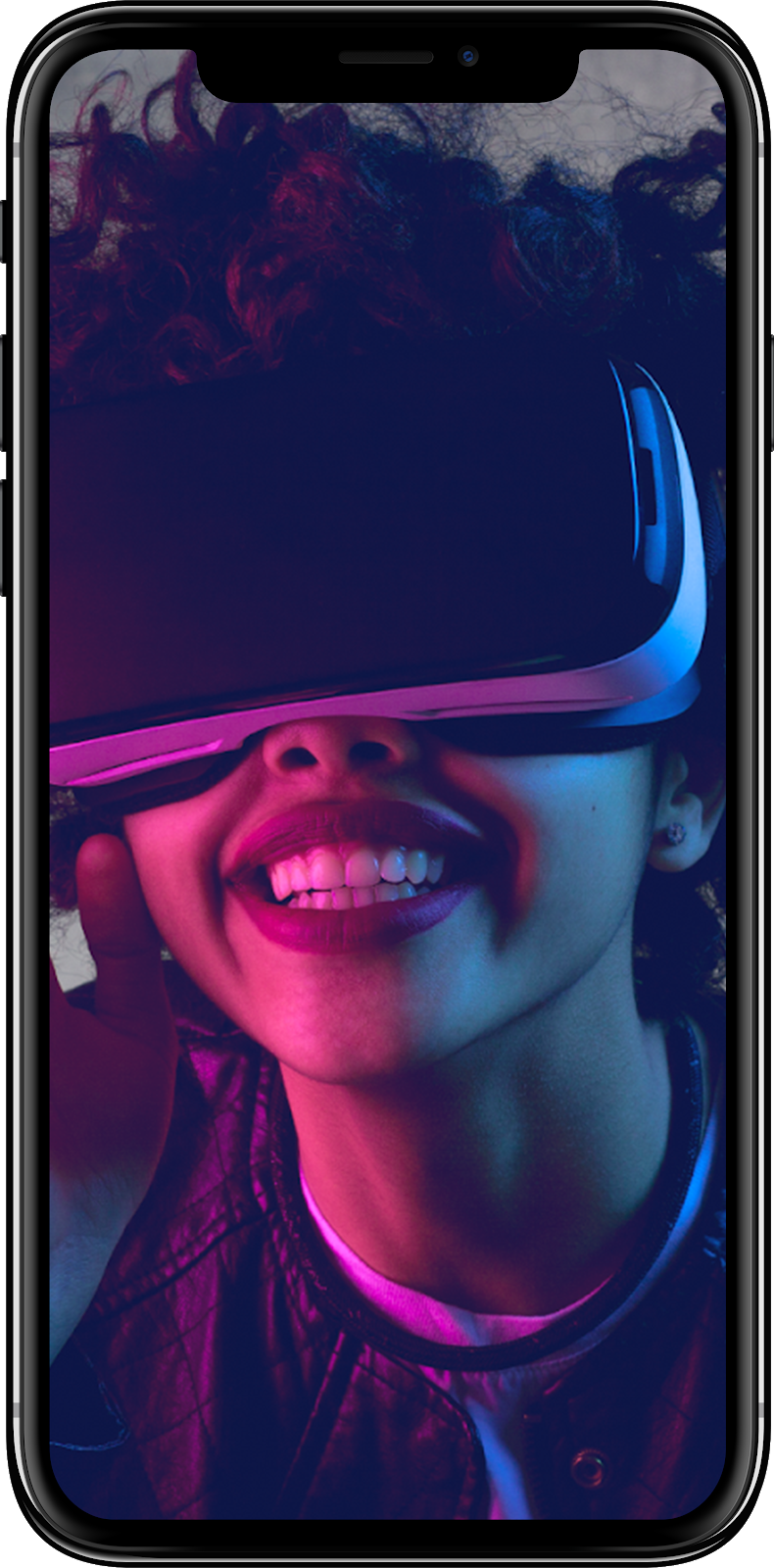Subscribe to our blog
Subscribe to our email newsletter for useful tips and valuable resources, sent out every month
How IoT Technology Helps Cities to
Focus on People
Focus on People
DECEMBER, 2019
INTRO: As cities are concentrating the largest part of the world's population, they face challenges that have never existed before. Evolution of smart cities from basic infrastructure elements to a comfortable urban ecosystem supports citizens throughout their lives and raises new concerns.
From Predictions to Future Technologies
Back in 1926. Nikola Tesla said the radio will turn into a "big brain", all things will be integrated into a single whole, and mankind will be able to control them with a small tool that will fit into a pocket. His prediction fully corresponds to what we now call IoT technology.
The Internet is connecting not only computers, laptops, tablets and smartphones, but billions of endpoints. Turning quantity into quality, we have come a long way from the concept of IoT home and expanded it in the idea of IoT smart city. In 2050, 70% of the world's population will be concentrated in cities. The number of megacities will increase from 31 to 41 by 2030. At the same time, cities face a range of serious problems, from pollution to water scarcity, to be solved through future technologies.
The Internet is connecting not only computers, laptops, tablets and smartphones, but billions of endpoints. Turning quantity into quality, we have come a long way from the concept of IoT home and expanded it in the idea of IoT smart city. In 2050, 70% of the world's population will be concentrated in cities. The number of megacities will increase from 31 to 41 by 2030. At the same time, cities face a range of serious problems, from pollution to water scarcity, to be solved through future technologies.
Shift from Industrial Internet of Things
We used to think IoT targets only the economy to assess the efficiency of a certain enterprise. The use of IoT technology provides flexibility to regulate production lines by means of robotic process automation, which makes obtaining information and forecast possibilities via artificial intelligence more accurate. IoT application experience shaked up full range of business matters. For instance, direct interaction with customers on the base of IoT technology empowers fulfillment of customers' needs. Such transformations are unlocking emerging technologies for cities as well.
IoT Analytics announced the latest update on ranking of 1,600 actual enterprise IoT projects divided to 10 main sectors. IoT Smart City was determined as the largest IoT project segment (23%) followed by projects in Connected Industry (17%), Connected Building (12%), Connected Car (11%), Smart Energy (10%) and others. The analysis performed by IoT Analytics shows the significant growth of IoT Smart City segment compared to 2016 Report.
IoT Analytics announced the latest update on ranking of 1,600 actual enterprise IoT projects divided to 10 main sectors. IoT Smart City was determined as the largest IoT project segment (23%) followed by projects in Connected Industry (17%), Connected Building (12%), Connected Car (11%), Smart Energy (10%) and others. The analysis performed by IoT Analytics shows the significant growth of IoT Smart City segment compared to 2016 Report.
Move from Basic Infrastructure to IoT Services
Traditionally, municipal authorities and lots of companies with their own systems and basic infrastructure offer a wide range of independent services which has lead to hyperconnectivity in smart cities. What does hyperconnectivity actually mean? Millions of interconnected city systems, IoT sensors, data, and analysis enable the traffic to flow, civic leaders to lead, and helps citizens to fully realize all the benefits of working and living in IoT smart city.
Gartner, Inc predicts that 5.8 billion endpoints are expected to be in use by 2020, which is a 21% increase from 2019. And it is just the starting point of the growth for smart cities.
The interconnectedness of smart city components is built at the following four levels (listed below), starting from the lowest level of basic infrastructure to the level of applications and services.
Level 1. The basic infrastructure serves as the basis for the development of a smart city and includes a transportation system, communication systems, power supply, urban lighting, collection and waste disposal, water supply and sanitation.
Level 2. The level of perception and measurement at which IoT sensors, objects and devices collect data on user behavior and machine interaction – video surveillance system as a case in point. Development of the urban IoT ecosystem begins from this level.
Level 3. Establishment of a cloud-based IoT platform for analyzing and processing Big Data which is collected at other levels provides useful information for improving IoT services and creating new ones.
Level 4. IoT applications and services make life easier and transform cities into an urban ecosystem.
Gartner, Inc predicts that 5.8 billion endpoints are expected to be in use by 2020, which is a 21% increase from 2019. And it is just the starting point of the growth for smart cities.
The interconnectedness of smart city components is built at the following four levels (listed below), starting from the lowest level of basic infrastructure to the level of applications and services.
Level 1. The basic infrastructure serves as the basis for the development of a smart city and includes a transportation system, communication systems, power supply, urban lighting, collection and waste disposal, water supply and sanitation.
Level 2. The level of perception and measurement at which IoT sensors, objects and devices collect data on user behavior and machine interaction – video surveillance system as a case in point. Development of the urban IoT ecosystem begins from this level.
Level 3. Establishment of a cloud-based IoT platform for analyzing and processing Big Data which is collected at other levels provides useful information for improving IoT services and creating new ones.
Level 4. IoT applications and services make life easier and transform cities into an urban ecosystem.
Turn to Urban Ecosystem
These days we are witnessing the process of creating urban ecosystems where citizens use benefits of mobility, public safety, health, and productivity. Cutting edge technologies of smart cities save time and give comfort and safety to citizens.
The Juniper study evaluated the potential of emerging technologies to save time. For instance, ITS (Intelligent Traffic Systems) can be leveraged to intelligently change dynamics of traffic light phasing. This disruptive technology flattens traffic flow and minimizes traffic jams. While on the subject of mobility, IoT sensors embedded at the bottow of garages and on roads send smartphone alerts and guide drivers to available parking spots. IoT solutions like AVs (Autonomous Vehicles) and MaaS (Mobility as a Service) transform car ownership into multi-occupancy rides and hence establish road safety concept.
Moreover, deployment of an IoT platform integrates vehicle providers and passengers combined by similar origin, route or destination and is based on the primary elements: a city transportation system that serves providers and a platform that manages optimum prices, routs, booking and payments. Thus, the fastest bus/subway choice provided by IoT platforms as well as smart traffic systems shaves 60 hours off average annual time spent in traffic.
With regard to the use of IoT in public administration, more countries are reaching the vision of need for reduction of bureaucratic delays. Complicated paperwork regulations require weeks or months, for example, for starting a business and other operations. Interoperable software systems, APIs and information storage/aggregation technologies simplify public administration procedures and result in 20 hours benefit for a city inhabitant per year.
Intelligent approach to decision making at the municipal level includes interaction with citizens through an information feedback system, population surveys and dialogue, analysis of behavior, mood and opinions of citizens, analysis of frames of interaction between people and urban infrastructure. All of this translates into collective decision-making which is based on data obtained through IoT technology.
IoT solutions in telemedicine, such as real-time health systems, chronic conditions management, remote monitoring devices, preventative healthcare apps give back almost 10 hours. Moreover, IoT devices can call an ambulance when they record a faint.
Besides, secondary treatment prescribed without direct contact with patients shortens queues in clinics. Based on patients' diagnoses, the unified healthcare cloud-based IoT platform performs a real-time audit of system operations of medical personnel in order to prevent incorrect diagnoses and wrong treatment. As a result, patients treatment becomes safer and more reliable.
The Juniper study evaluated the potential of emerging technologies to save time. For instance, ITS (Intelligent Traffic Systems) can be leveraged to intelligently change dynamics of traffic light phasing. This disruptive technology flattens traffic flow and minimizes traffic jams. While on the subject of mobility, IoT sensors embedded at the bottow of garages and on roads send smartphone alerts and guide drivers to available parking spots. IoT solutions like AVs (Autonomous Vehicles) and MaaS (Mobility as a Service) transform car ownership into multi-occupancy rides and hence establish road safety concept.
Moreover, deployment of an IoT platform integrates vehicle providers and passengers combined by similar origin, route or destination and is based on the primary elements: a city transportation system that serves providers and a platform that manages optimum prices, routs, booking and payments. Thus, the fastest bus/subway choice provided by IoT platforms as well as smart traffic systems shaves 60 hours off average annual time spent in traffic.
With regard to the use of IoT in public administration, more countries are reaching the vision of need for reduction of bureaucratic delays. Complicated paperwork regulations require weeks or months, for example, for starting a business and other operations. Interoperable software systems, APIs and information storage/aggregation technologies simplify public administration procedures and result in 20 hours benefit for a city inhabitant per year.
Intelligent approach to decision making at the municipal level includes interaction with citizens through an information feedback system, population surveys and dialogue, analysis of behavior, mood and opinions of citizens, analysis of frames of interaction between people and urban infrastructure. All of this translates into collective decision-making which is based on data obtained through IoT technology.
IoT solutions in telemedicine, such as real-time health systems, chronic conditions management, remote monitoring devices, preventative healthcare apps give back almost 10 hours. Moreover, IoT devices can call an ambulance when they record a faint.
Besides, secondary treatment prescribed without direct contact with patients shortens queues in clinics. Based on patients' diagnoses, the unified healthcare cloud-based IoT platform performs a real-time audit of system operations of medical personnel in order to prevent incorrect diagnoses and wrong treatment. As a result, patients treatment becomes safer and more reliable.

As for public safety, IoT technology can be focused on machine learning and generate predictions in order to route city services to areas where fires, flooding or crimes peak are most likely to occur. Emergency services can be leveraged by the municipal traffic control system – traffic redirection in critical situations or during the "golden hours" will cut arrival times by 50%. In consequence it increases average life expectancy in the sense of chronic diseases, road accidents and crimes.
IoT services improve the quality of life not just in the way of time reduction. Cutting edge technologies of smart cities ensure potential improvements of quality-of-life indicators: employment rates go up 1% - 3% while living expenses drop by 1% - 3%, GHG emissions, unrecycled waste and water consumption decline by 10% - 30%, disease rates are reduced by 8% - 15%, fatalities figures are lowered by 8% - 10%, number of crimes decreases by 30% - 40% and so on.
After analyzing smart city's benefits for a citizen's life, we decided to develop an IoT application for optimizing utility costs. In the outcome we created the service as a part of smart city. It works as an IoT gateway that collects resource usage data from wireless sensors (meters) and transmits it to a cloud server and end users.
IoT services improve the quality of life not just in the way of time reduction. Cutting edge technologies of smart cities ensure potential improvements of quality-of-life indicators: employment rates go up 1% - 3% while living expenses drop by 1% - 3%, GHG emissions, unrecycled waste and water consumption decline by 10% - 30%, disease rates are reduced by 8% - 15%, fatalities figures are lowered by 8% - 10%, number of crimes decreases by 30% - 40% and so on.
After analyzing smart city's benefits for a citizen's life, we decided to develop an IoT application for optimizing utility costs. In the outcome we created the service as a part of smart city. It works as an IoT gateway that collects resource usage data from wireless sensors (meters) and transmits it to a cloud server and end users.

Adding a new location is easy: the user specifies the location and assigns a sensor to the location. It is possible to reinstall the sensors in new locations and reassign them a zone in the application. We implemented meters registration and tariffs input functions in the relevant sections (water, electricity, gas). Thus, the application calculates costs and stats for a selected period of time. Locations layout helps to find resources overrun.
The ultimate goal is to easily control and reduce energy consumption throughout a state's territory. Yet at this stage users are given the opportunity to reduce their utility costs by 10% - 30%.
The ultimate goal is to easily control and reduce energy consumption throughout a state's territory. Yet at this stage users are given the opportunity to reduce their utility costs by 10% - 30%.
The Next Step in the Evolution
Single-source platforms, interconnected tools, portability of assets and disruptive technologies are implicit in the coming interconnected future. The core idea around smart cities is to orient advanced technologies towards increasing efficiency, for example, transforming LED streetlights into a citywide WAN, developing 5G networks, quantum computing, and artificial intelligence.
But the deeper smart technologies are being integrated into cities and homes, the more questions about privacy and security of personal data arise. IoT technology captures confidential and personal information, and this will be the biggest challenge for the police, the government, and the world.
On the other hand, the rapid growth of IoT solutions generates the risk of total control. It is obvious that in the future there will be no opportunity to disconnect from IoT services, though IoT devices will be as secure as possible to protect IoT platforms from cyber threats.
But the deeper smart technologies are being integrated into cities and homes, the more questions about privacy and security of personal data arise. IoT technology captures confidential and personal information, and this will be the biggest challenge for the police, the government, and the world.
On the other hand, the rapid growth of IoT solutions generates the risk of total control. It is obvious that in the future there will be no opportunity to disconnect from IoT services, though IoT devices will be as secure as possible to protect IoT platforms from cyber threats.
Thoughtful leadership in your mobile development!
Do you want to improve the effectiveness of your business?



The most popular articles
IT might interest you

